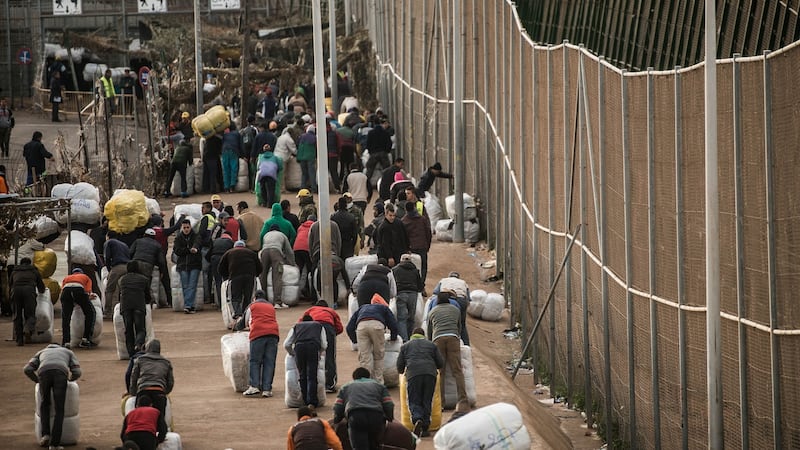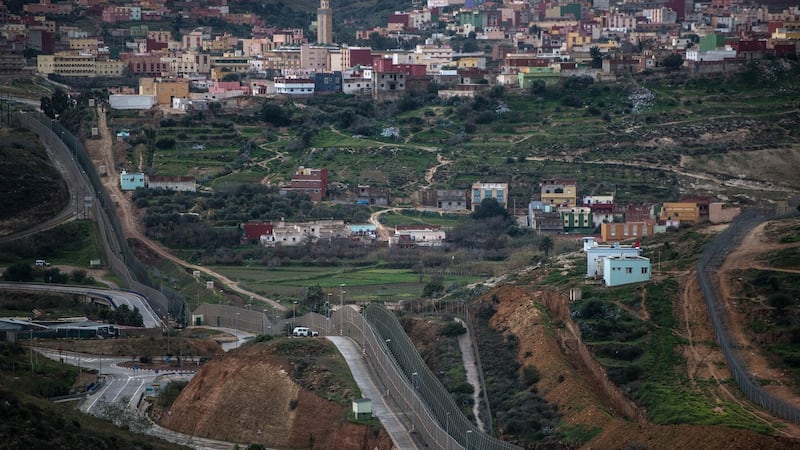As our ferry approaches the North African coastline, an idyllic backdrop comes into view. The autonomous city of Melilla, with its 500-year-old citadel walls rising up from the shoreline, is a tiny speck of Spanish territory 160 kilometres across the Mediterranean Sea from mainland Europe.
It is one of only two land borders the European Union shares with Africa – the other, Ceuta, lies 400 kilometres northwest and is also a Spanish territory.
A fenced-in territory of just 13 square kilometres, Melilla’s residents enjoy a wealth of benefits. Corporate and income tax is 50 per cent the rate of peninsular Spain, and locals enjoy a tax-free imports and exports regime.

Plane and ferry tickets to and from Spain carry a 50 per cent discount. Historically, an entry point into North Africa for French and Spanish merchants, today, Melilla enjoys customs-free trade with Europe while sitting outside the customs union, an arrangement that some in Britain have suggested Brexit negotiators should seek.
The city is home to charming Gaudi-inspired architecture and feels equal parts odd and intriguing given that it lies on continental Africa. It also has a deeply-ingrained Arabic identity, and about half its population is Muslim.
However, all is not well in Melilla. While the wider EU economy has regrouped since the 2008 global financial crisis, the effects of the downturn persists in Melilla.
A massive 63 per cent of under-25s, the highest figure of any region in the EU, and more than one-in-four of the general population, are officially out of work.
As the Spanish economy crumbled and jobs dried up, tens of thousands of Moroccan immigrants departed the mainland for Melilla and neighbouring northern Morocco, contributing to today’s sky-high unemployment rate.
Population spurt
Immigration has fuelled a population spurt from 71,000 to 86,120 (a rise of 21 per cent) people in 10 years, even as Spain’s national population has contracted. Today, Melilla’s GDP per capita ranks as the lowest in Spain.
With few natural resources to speak of, trade is heavily dependent on the outside world.
“Melilla’s economy is almost entirely reliant on commerce and on EU subsidies,” says Laia Soto Bermant of the University of Helsinki, who spent 18 months researching trade and migration in Melilla and Nador, a city of 170,000 people across the border in Morocco.
“There are few local industries, no agriculture and no fishing. It is mostly commerce with Morocco and government positions that offer employment – note that the public sector in Melilla is huge, employing around 40 per cent of the local population, mostly of Spanish descent.”

Much of the EU funding Melilla receives goes to strengthening border security.
A short walk south of the port district, Melilla’s wide boulevards and beaches give way to the exclave’s economic heartbeat: the Beni Anzar border crossing. On the approach to the Moroccan frontier, footpaths begin clogging up with boxes of goods. Men fill cars with 25kg sacks of chickpeas, curtain rails and Spanish-made bed throws.
Women carrying plastic bags brimming with clothing and footwear fill the streets, and 1990s-era SUVs driven by well-heeled families speed south into Morocco. A huge percentage of the €300 million worth of imports that comes through Melilla’s port every year ends up in Morocco or further south.
Despite the bustle, it’s here the economic and employment pinch is being felt most acutely.
Hamza Fathe runs a grocery and household goods wholesaler a stone's throw from the border, and says cross-border trade this year has been worse than in the past. "It's down about 80 per cent on last year," he says. "The frontier has been closed more this year than before because of security reasons, and there's not a lot of business or activity in northern Morocco, so [Moroccan] people don't have the interest or money to buy here and take [goods] over the frontier."

Some 15 per cent of Melilla’s population are foreigners and 90 per cent of those are Moroccan. Fathe says 99 per cent of what he sells, Spanish- and European-made products, is bought by middle-class Moroccans and end up over the border.
Such is the border’s importance to Melilla that the site on which the recently-opened Melilla Park Mall sits, the city’s first, is within walking distance of the crossing.
Construction
The mall boasts Levi's, Decathlon Sports and Pull and Bear outlets, but on a Saturday afternoon in May customers are few, and construction is far from completed.
Soto Bermant believes official trade numbers may not be entirely accurate as the majority of goods exported to Morocco are transferred without customs duties being paid.
Residents of Nador, the Moroccan province surrounding Melilla on three sides, can enter the exclave for up to five hours, four days a week even though the Moroccan government refuses to recognise Spain’s sovereignty over the territory.
Around the corner from Fathe’s store, dozens of Moroccan women and men with sacks of household goods weighing up to 80kg line up, waiting to cross into Beni Ansar.
Goods carried in vehicles are taxed, but anything taken across on foot is regarded as personal luggage and therefore not subjected to customs. So-called “mules”, mostly middle-aged women, earn about €5 per trip and none are keen to be interviewed or photographed.
They all appear exhausted. The women are headed home to northern Morocco where the unemployment rate runs at double the national average, and where protests against the lack of jobs and low incomes for miners have rumbled on for more than a year.
It’s hardly surprising then, that 30,000 Moroccans enter Melilla every day to work in low-paying occupations, further depressing the local jobs market.
Figures from Melilla's Central Directory of Companies used by the European Commission show that of the 4,524 companies registered in the exclave in January 2017, 58 per cent have no employees. The highest number of unemployed persons in the territory are registered as having previously worked in manufacturing, cleaning positions and labouring.
“The different governments have done little to redress historical inequalities,” says Soto Bermant, “and young Muslim generations are still suffering from a legacy of structural poverty. Muslim-majority neighbourhoods have the highest illiteracy and school drop-out rates, and highest unemployment rates. Many find that the only way to make a living is to get involved in the informal economy.”
Efforts are afoot to try turn things around. By September, an environmental impact report is expected to give the go-ahead for a €300 million port upgrade, and the port authority says it’s ironing out a strategy that would see cruise ships dock here by 2020.
A 50 per cent rebate on social security contributions by self-employed individuals is expected to be introduced in a bid to encourage companies already established in the city to recruit workers.
Official unemployment rates, though still extraordinarily high, have fallen slightly. And though the economy may be hurting, there’s a laid-back atmosphere in Melilla that no doubt the blazing sunshine and the sight of lasers dinghies sailing around the bay helps to foster.
But clear blue skies don’t bring jobs. And with a birth rate of 12 per 1,000 (Spain’s national rate is nine while the EU 27 average is 10) there may be more trouble down the tracks for this territory perched quietly on the edge of Europe.








